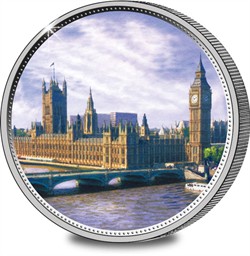-no-button.jpg)
 |
Location: Westminster, Central London
Date completed: built 1840-1870
Designers/builders: Charles Barry and Augustus Pugin
Function: Centre of Parliamentary government of the United
Kingdom
|
Had other decisions been made, our parliament might operate from
Buckingham Palace. In 1834 much of the then houses of parliament
were ravaged by fire. Only the Westminster Hall, the cloisters of
St Stephens, the Chapel of St Mary Undercroft and the Jewel Tower
survived. King William IV offered Parliament Buckingham Palace,
which he strongly disliked as a home, but it was rejected, together
with other alternative sites. Instead, Parliament made the decision
to rebuild on a grand scale using the old site, together with an
area reclaimed from the adjacent River Thames. A competition for
the new parliament was won by the architect Charles Barry, who
proposed a building the fashionable revived perpendicular gothic
style. He was assisted by the young Augustus Pugin, a leading
authority on the neo-gothic style. While Barry designed and
co-ordinated the entire scheme, Pugin was responsible for the
gothic interiors, including furnishings, carvings, wall-paper and
windows. He also designed the iconic Clock Tower, later known
around the world as "Big Ben" and today called the Elizabeth Tower.
Work on the rebuilding started in 1840 and went on for 30 years,
hampered by numerous delays and cost overruns. Both Barry (in 1860)
and Pugin (in 1852) died before the work was finally completed. The
new Palace of Westminster was larger than the old one, occupying
some 8 acres (3. 24 hectare) comprising over 1,100 rooms. The 873
ft (266 m) principal façade overlooks the River Thames.
Parliament had its origins in the Great Councils summoned by the
Norman kings to advise and assist with raising money through
taxation. Building on the Magna Carta of 1215, in 1264 the
French-born Simon de Montfort summoned the first Parliament without
consulting the king, Henry III. Parliament grew in influence during
the reign of Edward I and for some time the power and influence of
Parliament depended on the strength or weakness of the monarch. In
the 17th Century the growing conflict between monarch and
Parliament erupted into war. Since then, the monarch has assumed an
increasingly subsidiary, if constitutionally important, role. Today
the imposing houses of Parliament are a symbol of our
democracy.